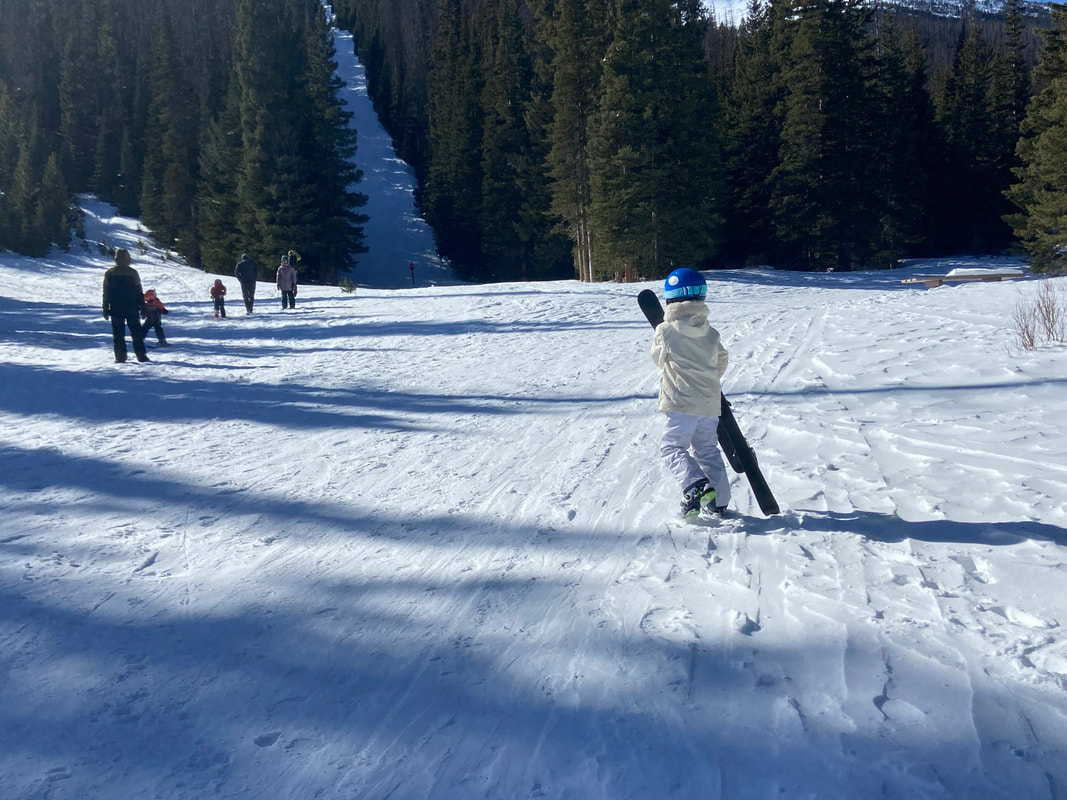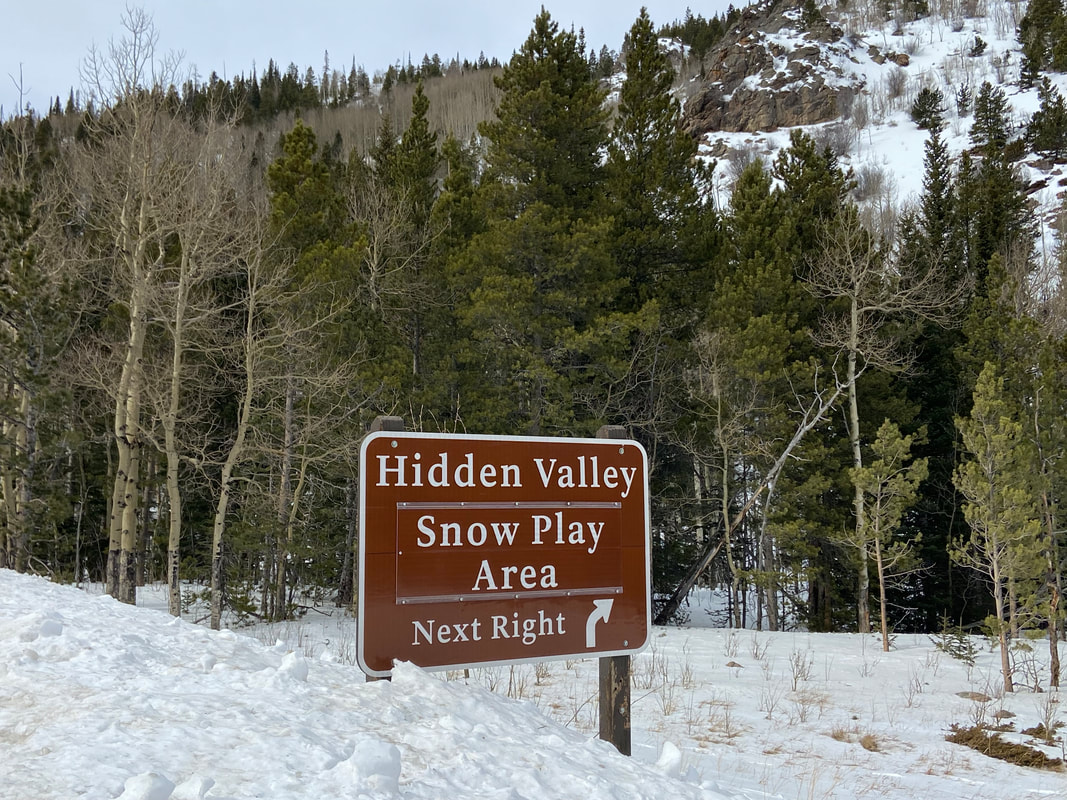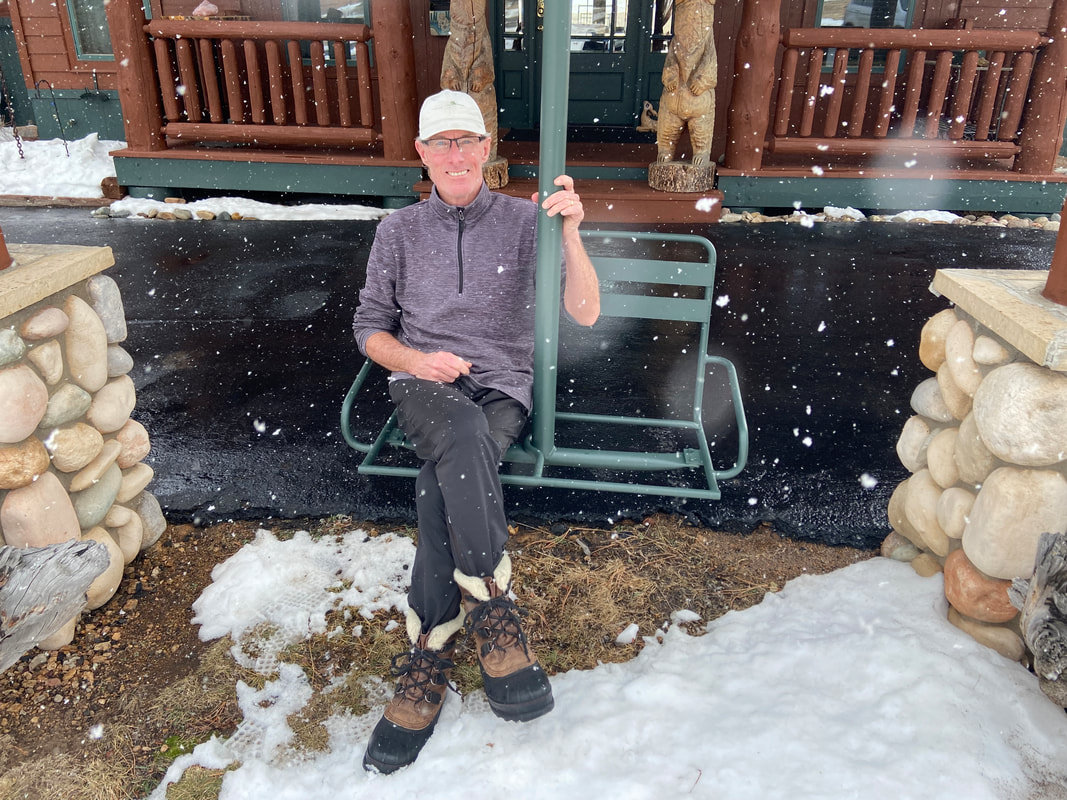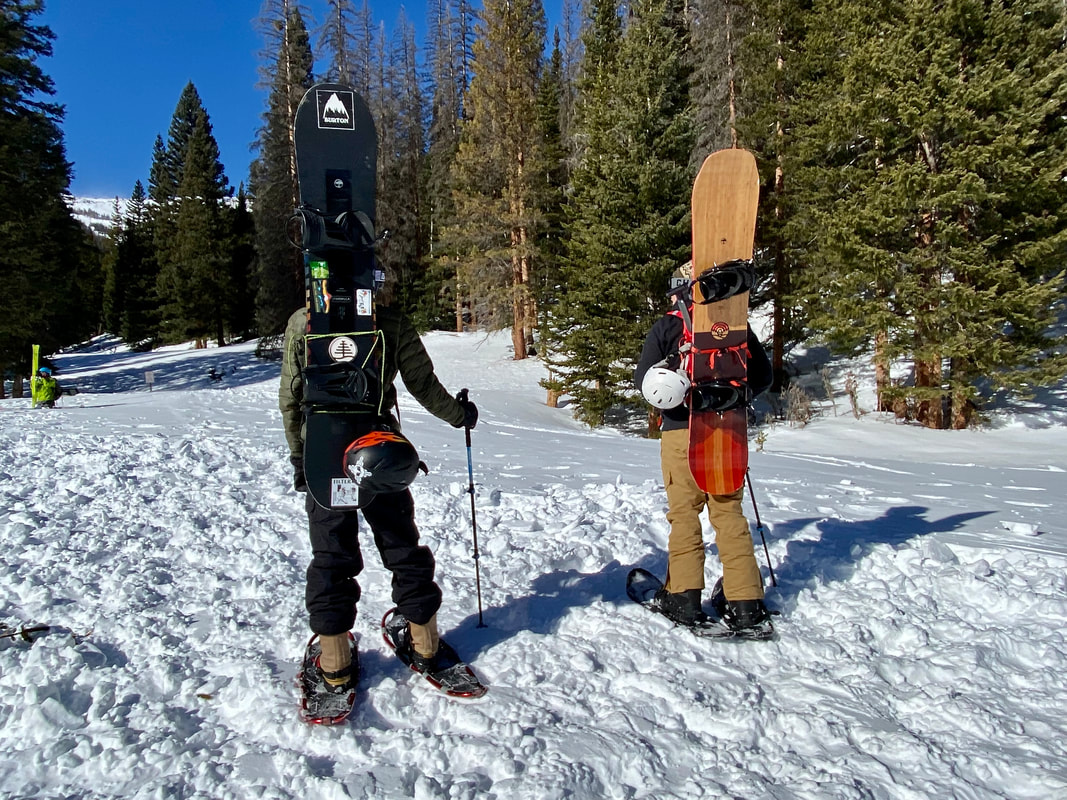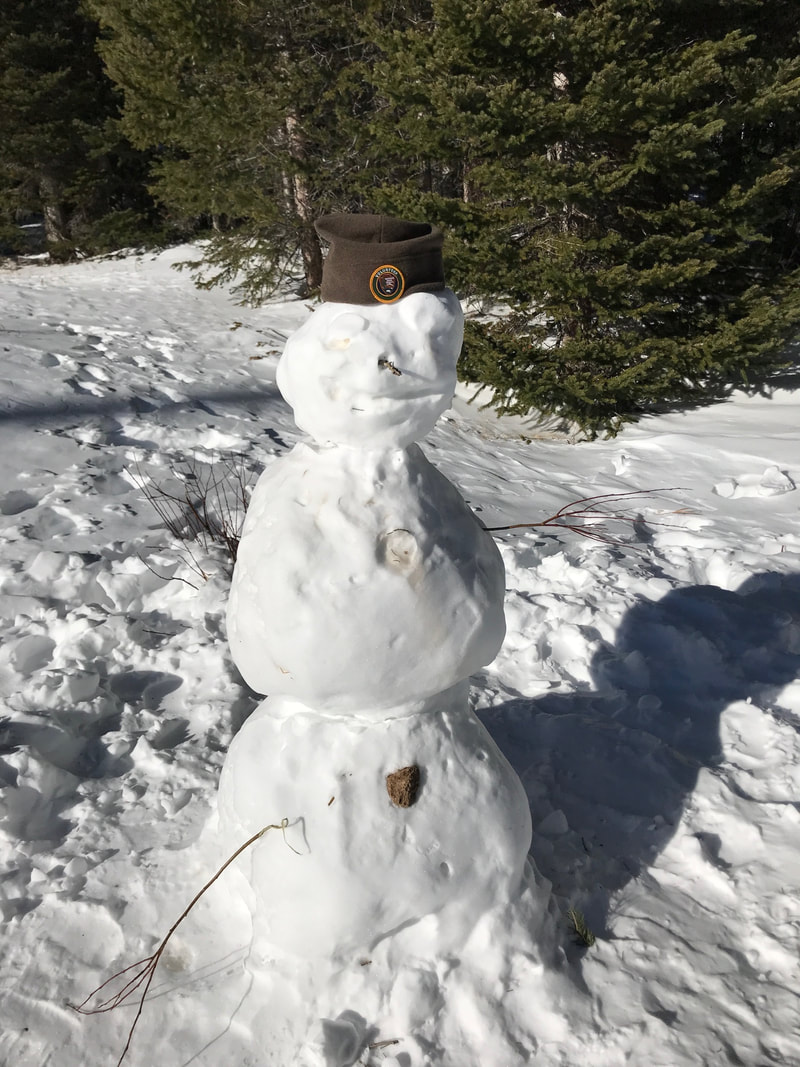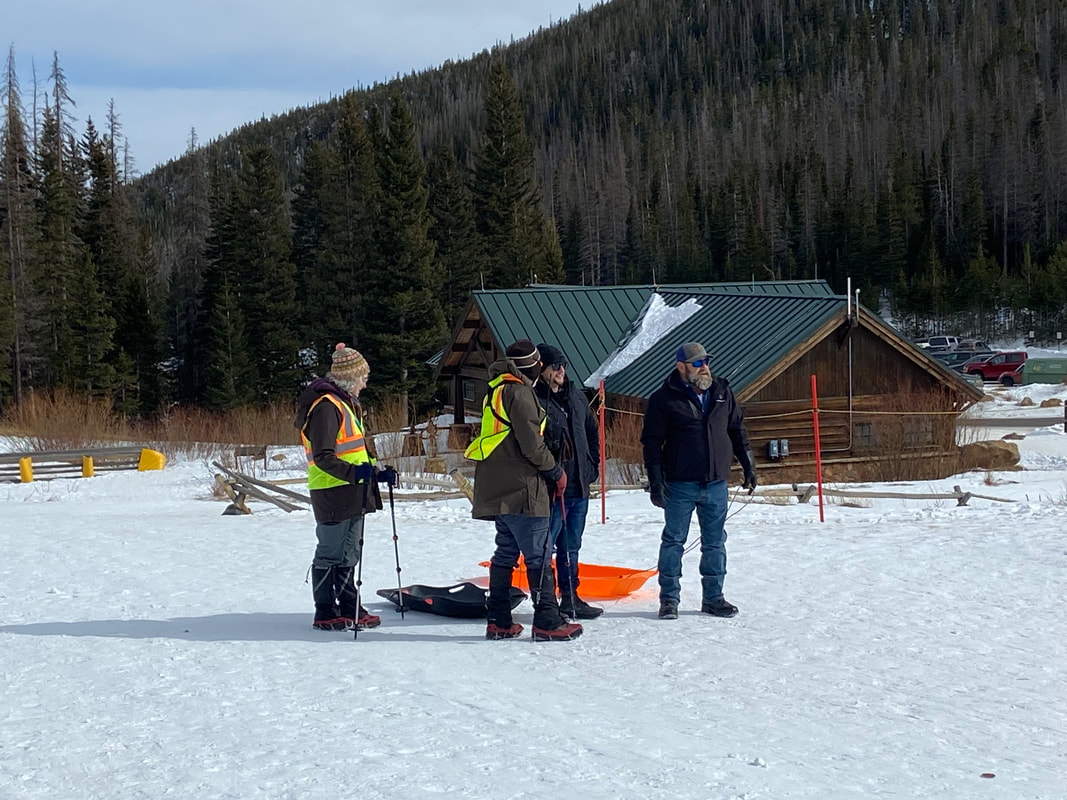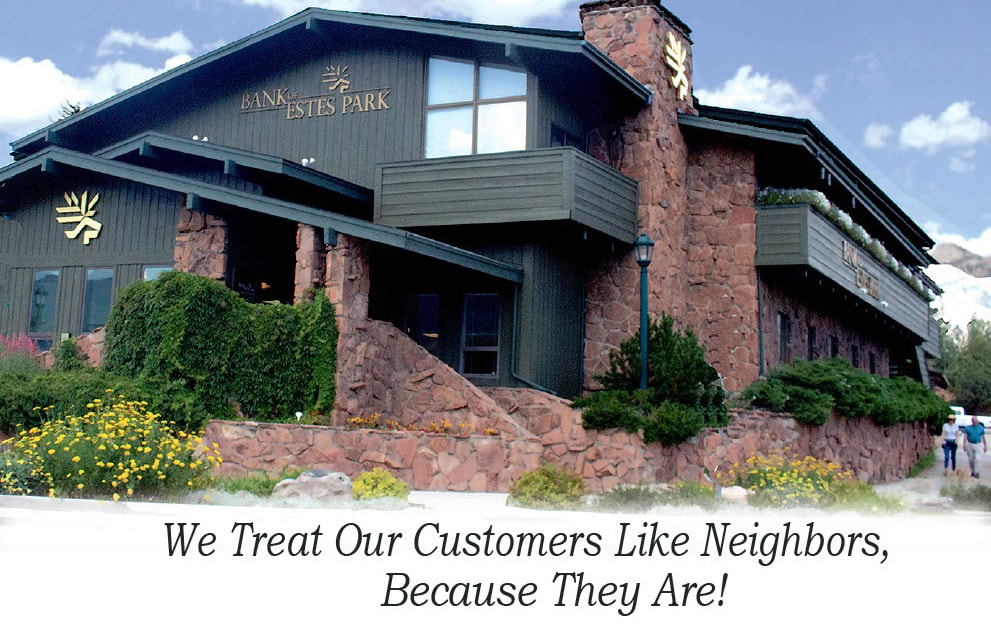|
story and photos by Marlene Borneman this story was included in the 2023 Snow Play edition of HIKE ROCKY magazine “You're off to good places, today is your day. Your mountain is waiting so, get on your way.” - Dr. Seuss A spot with deep roots for winter adventures within Rocky Mountain National Park is long-loved Hidden Valley. At 9,240 feet of elevation and thick with Engelmann spruce and Subalpine fir, this narrow valley offered enjoyment in the snow long before it became known as a downhill ski area. As early as the 1930s, locals skied old logging skids and started make-shift runs. According to his book, Recollections of a Rocky Mountain Ranger, Jack Moomaw managed the National Championship Ski Races at Hidden Valley in the winter of 1937. The Colorado Mountain Club also enjoyed many ski and snowshoe outings there in those early years. The Hidden Valley Ski Area officially opened in 1955, providing ski lessons and rentals, as well as a cafeteria, lodge, an ice skating rink and daycare. Hidden Valley certainly filled a niche for locals and the Front Range communities. Local schools took advantage of Hidden Valley and loaded school buses with students for a day of skiing. The last season for the facility was 1991, when operations closed due to financial losses, lack of consistent snow conditions and the I-70 corridor opening access to larger ski resorts. All that remained were materials salvaged to construct the current warming hut and restrooms. Estes Park local Brad Doggett was part of the Hidden Valley Ski Patrol from 1979 to 1987. According to Doggett, there were no groomed trails or modern snow-making equipment when he started work at the ski area. What he appreciated most was the family- focused atmosphere for visitors and staff. Hidden Valley Ski Area provided local jobs and a gathering place to socialize with like-minded people and will always be close to Doggett’s heart. Hidden Valley is still a thriving location for a range of winter activities. Sledding is a popular activity for families and the only place within the park where sledding/tubing is permitted. Children and adults of all ages spend many hours tramping up the hills and swishing down on sleds and tubes. Backcountry skiers, snowboarders and snowshoers are also fond of the recreational opportunities at Hidden Valley. Ski runs from 30-plus years ago provide trails through the heavily forested terrain. The slopes west of the sledding hills are a perfect place to learn and/or practice backcountry/cross-country skiing and snowboarding. The Colorado Mountain School schedules many ski classes and avalanche courses on the higher slopes. Park Rangers conduct SAR (Search & Rescue) Training at Hidden Valley. In 2016, an avalanche beacon training park was installed at Hidden Valley to be used by the public and as a vital part of training for park staff. The purpose of the Beacon Hill is for skiers to practice their transceiver location and probing skills in case of an avalanche. This free service encourages the public to practice avalanche safety. A shovel, beacon and probe are essential avalanche rescue tools and should be carried by all backcountry skiers. (also, see last edition's story, Winter Safety in the Backcountry ) Walkers take advantage of the winter's beauty here. Picnic tables are in place for both summer and winter picnics. Building a snowman is a delight at any age. Many folks visiting from warmer states or countries are thrilled to experience sparkling snow for the first time. On winter weekends Hidden Valley is staffed by VIPs (Volunteers in Parks) fittingly designated “Sled Dawgs.” VIPs help folks locate sledding slopes and ski trails, open the warming hut, provide Park information, and assist in getting medical attention in case of accidents. The goal of a “Sled Dawg” is to provide information on “snow play” fun and safety at Hidden Valley. The Junior Ranger Program is a great addition this winter at Hidden Valley. Park Rangers present a variety of learning opportunities to all ages. Explorer bags equipped with binoculars, magnifying glasses, temperature gauges and informational pamphlets are available to future Junior Rangers. Rangers gladly answer questions about Rocky's wildlife, weather, geology and much more. 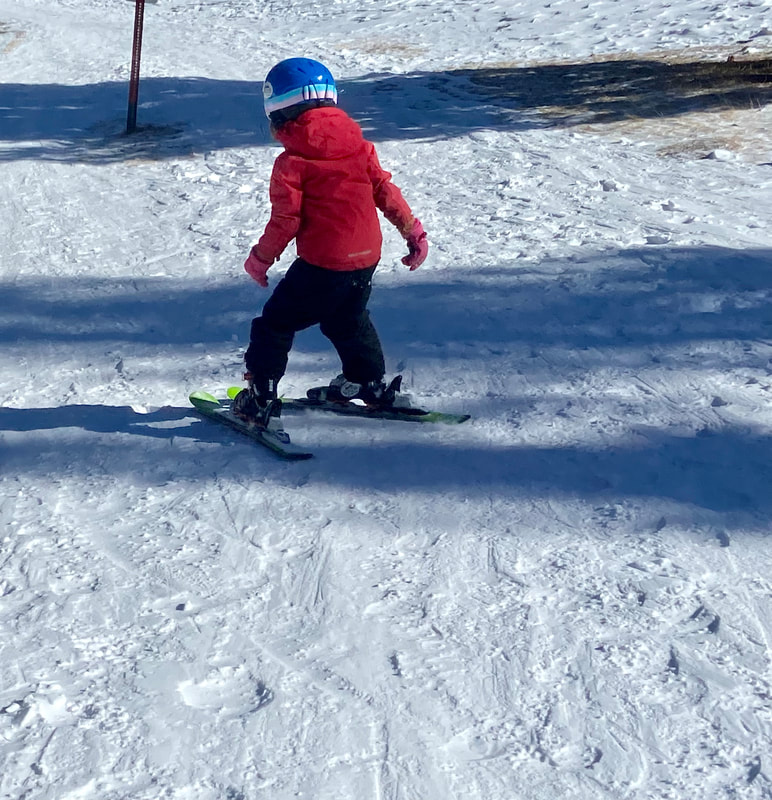 Hidden Valley is the perfect place to practice new skiing skills! Hidden Valley is the perfect place to practice new skiing skills! Be aware there are dangers in sledding, skiing, and snowshoeing in a wilderness area. Sledding accidents far outnumber accidents among skiers or snowshoers. According to Mike Lukens, RMNP Wilderness/Climbing Program Supervisor, years ago there were five ambulance runs from the sledding hill in one day! VIPs inform visitors of sledding boundaries, to be mindful of other sledders, and to remind them to walk up the sides of the sledding hill rather than the middle. These simple tips may help visitors avoid accidents. Hypothermia is a real threat. Adequate warm clothing and proper gear is a must. Don't forget sunscreen! The warming hut is a welcome bonus at Hidden Valley offering a heated indoor place to take time for rest; bring drinks and food to keep hydrated and energized. Even in winter months, there are opportunities for bird and wildlife viewing. Stellar’s jays, Clark's nutcrackers, gray jays, ravens, chickadees, woodpeckers, and turkeys are often seen throughout this valley. Moose, elk, and deer enjoy browsing along the willows that poke above the snow. Be watchful for coyotes looking for prey. All sorts of fun can be had at Hidden Valley in the chill of winter. So, layer on your warm clothes, choose your gear, and come play in the snow at Hidden Valley. 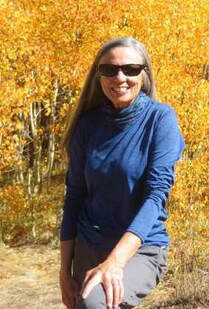 Marlene has been photographing Colorado's wildflowers while on her hiking and climbing adventures since 1974. Marlene has climbed Colorado's 54 14ers and the 126 USGS named peaks in Rocky. She is the author of Rocky Mountain Wildflowers, 2nd Ed, The Best Front Range Wildflower Hikes, and Rocky Mountain Alpine Flowers, available for purchase here. The publication of this piece of independent and local journalism was made possible by the Bank of Estes Park and Longhorn Liquor.
0 Comments
Leave a Reply. |
Categories
All
|
© Copyright 2025 Barefoot Publications, All Rights Reserved

